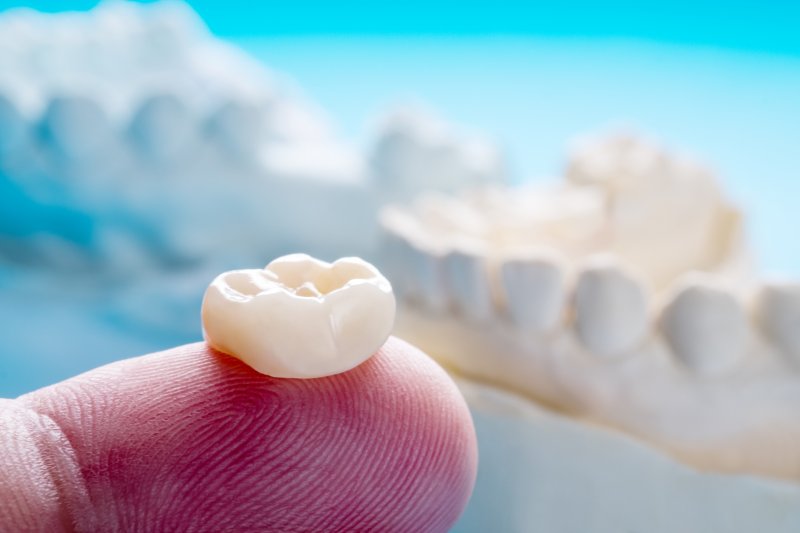
Many people have teeth that have been compromised due to decay or injury, and some individuals are born with pearly whites that are naturally stubby or oddly shaped. In many cases, dental crowns can address these issues by restoring lost enamel and resculpting the tooth into a more beautiful and functional shape. Here’s a quick look at how dental crowns are placed, what you can expect during the recovery period, and how you can stay comfortable while recuperating.
What Is a Dental Crown?
A dental crown is a restoration designed to replace lost enamel structure or reshape teeth for cosmetic reasons, and they are often used to rebuild and preserve teeth damaged by trauma or infections. Crowns are permanently cemented over teeth, so the patient should not be able to remove them without the help of a dentist. Each appliance is customized to fit the treated tooth while aligning with the patient’s existing bite, and your device should be remarkably comfortable and natural-feeling after you get used to wearing it.
How Are Dental Crowns Placed?
While crowns have traditionally required at least two appointments scheduled two weeks apart to be placed, many dentists today use CEREC technology that allows them to install a restoration in a single appointment. After the patient receives an appropriate anesthetic, the dentist will carefully reshape the tooth being treated to eliminate infected matter and make room for the appliance. Then, they will use a specialized scanner to create a three-dimensional map of the mouth, and this data will be used to craft a personalized crown.
A machine will mill the restoration down from a block of ceramic material designed to mimic natural dental structure in about an hour. When the appliance is ready, the dentist will cement it to the treated tooth and send the patient on their way to enjoy their new smile.
What Is Recovering from Dental Crown Placement Like?
You can expect to experience some discomfort for several days after receiving your crown, but this should be mild and gradually go away on its own. Your dentist will provide you with detailed aftercare instructions that will help you stay comfortable while adjusting to your new appliance, and they will probably include:
- Using over-the-counter pain medication when necessary
- Applying an ice pack or cold compress to address swelling or discomfort
- Avoiding chewing with the new dental crown for several weeks while the cement sets
- Refraining from acidic foods and beverages that can erode the cement such as soda pop, citrus, and alcohol.
- Upon noticing signs of infection such as fever, swelling, chills, or a nasty taste in your mouth, contact your dentist.
A dental crown may be the best way to restore the strength and beauty of your smile. By adhering to your dentist’s aftercare instructions, you can ensure that your recovery remains as smooth and complication-free as possible.
About the Practice
Grateful Dentists offers the finest oral healthcare in Billerica. Led by Drs. Adam Danzig and Rachel Snook, the staff treats each patient with courtesy, compassion, and exemplary customer service. Areas of expertise include general, cosmetic, emergency, and restorative dentistry such as dental crowns. To learn more about caring for your new dental crown, contact the office on the web or dial (978) 667-5807.



